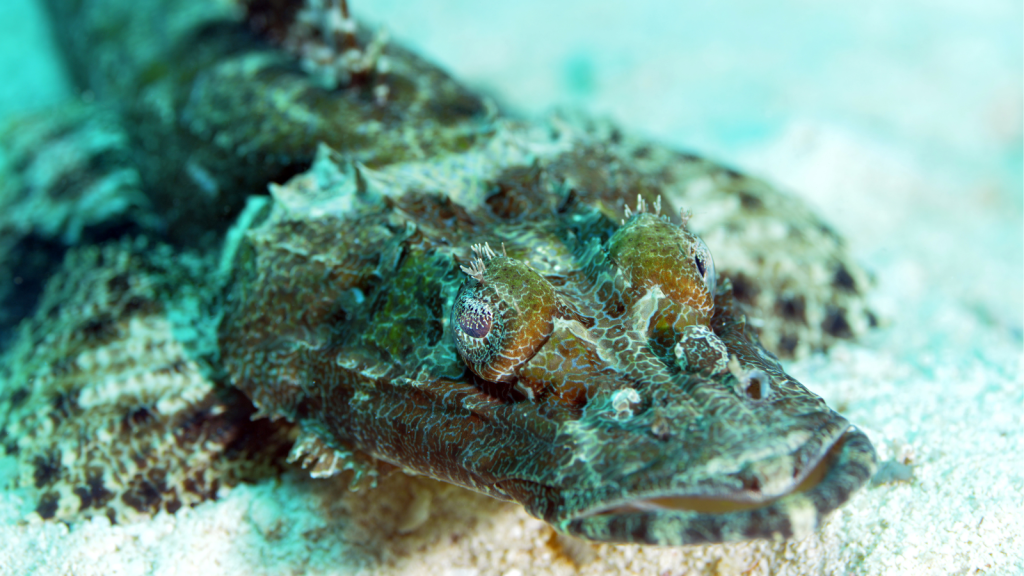The crocodile fish, also known as the tentacled flathead, is a master of disguise lurking in the waters of the Indo-Pacific region. With its unique appearance and intriguing behaviors, this creature is fascinating. Despite its name, the crocodile fish isn’t related to crocodiles at all – it’s actually a type of flathead fish. Its peculiar features and hunting tactics make it a true wonder of the underwater world. Let’s explore some amazing facts about this remarkable marine creature that might just change the way you think about fish!
1. Masters of Camouflage
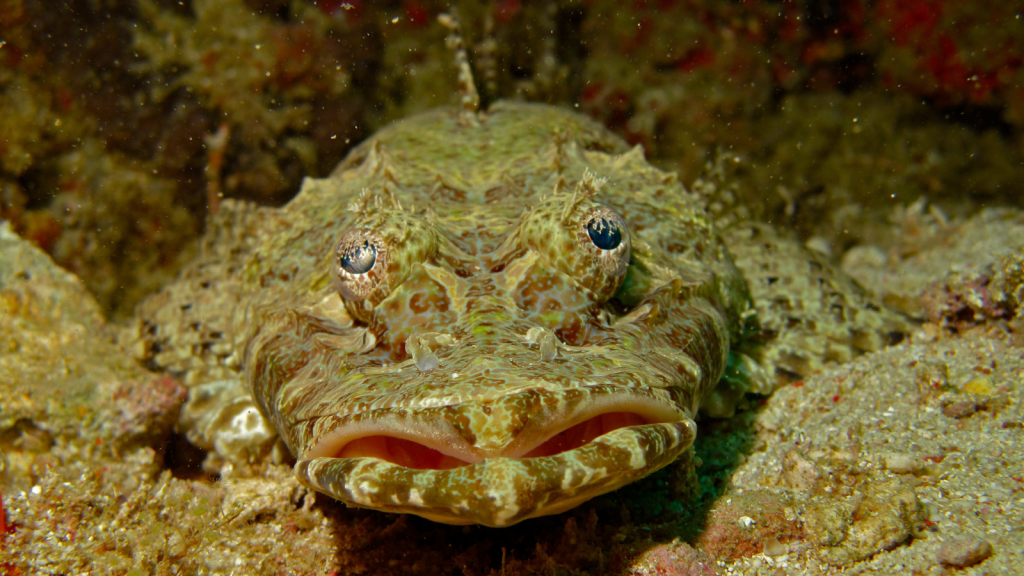
Crocodile fish are experts at blending in with their surroundings. Their mottled brown and tan coloration helps them match the sandy or rocky sea floor. They can even change their color slightly to better match their environment. This camouflage is so effective that they’re often nearly invisible to both prey and predators.
2. Not Actually Related to Crocodiles
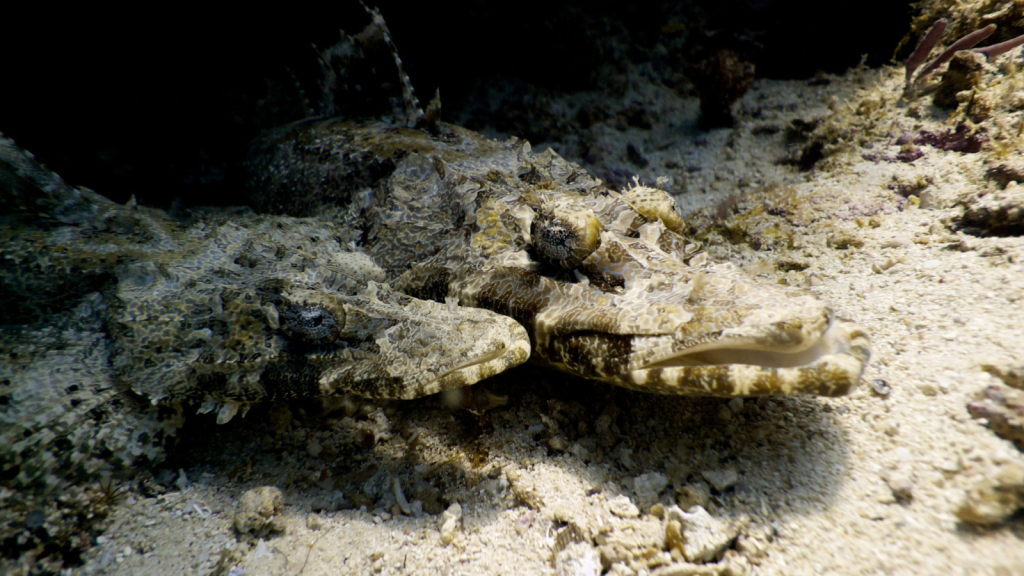
Despite their name, crocodile fish aren’t related to crocodiles at all. They’re actually a type of flathead fish, belonging to the family Platycephalidae. Their name comes from their long, flattened heads that resemble a crocodile’s snout. This is a great example of convergent evolution, where unrelated species develop similar features.
3. Ambush Predators
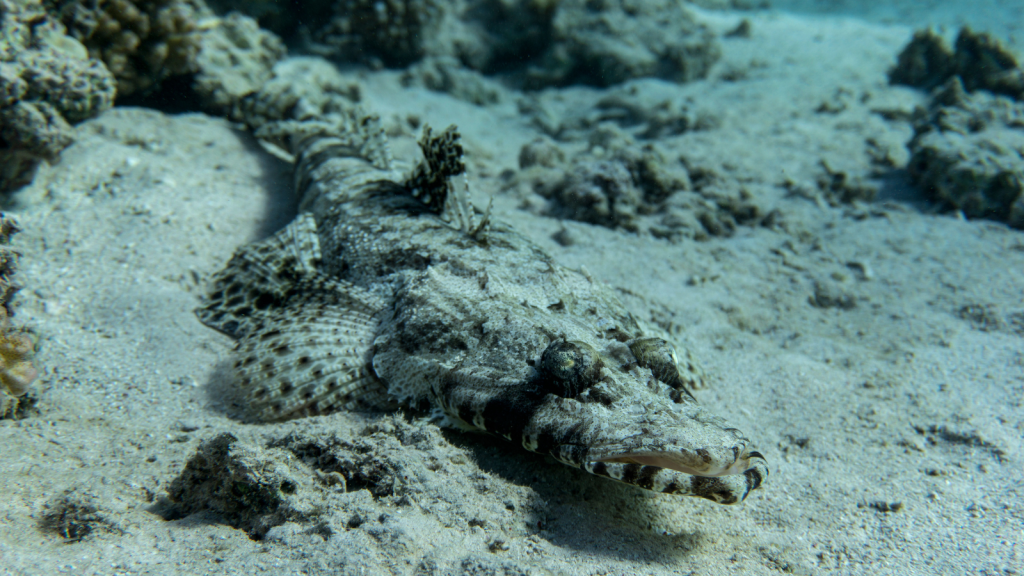
Crocodile fish are patient hunters that use an ambush strategy to catch their prey. They lie motionless on the sea floor, often partially buried in sand, waiting for unsuspecting fish or crustaceans to swim by. When prey comes close enough, they strike with lightning speed, using their large mouths to swallow the prey whole.
4. Venomous Spines

These fish come equipped with a natural defense mechanism – venomous spines. They have sharp, poisonous spines on their gill covers and dorsal fin. While not typically fatal to humans, a sting from these spines can be extremely painful and may cause swelling and inflammation. It’s best to admire these fish from a safe distance!
5. Eyes on Top
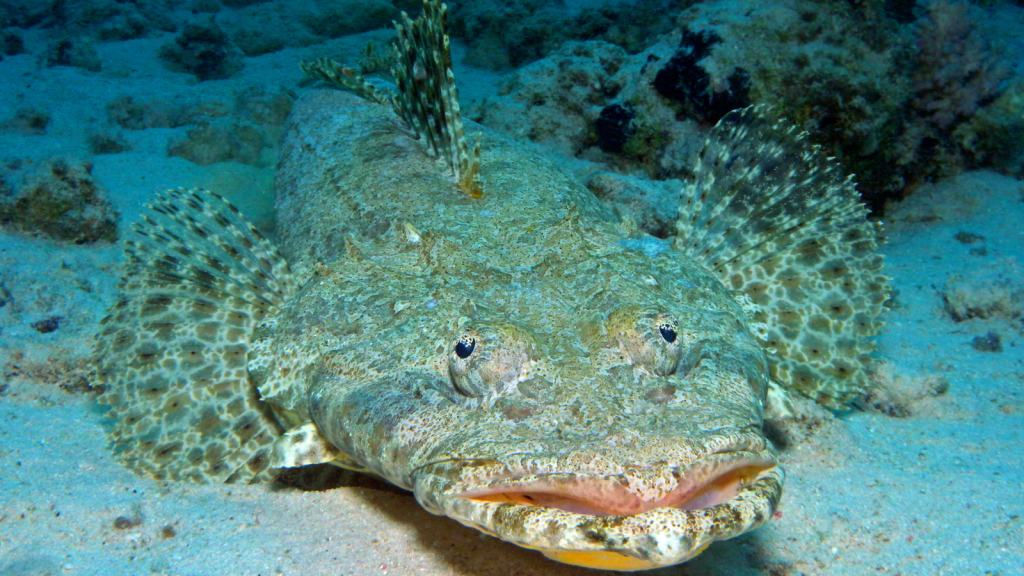
One of the most distinctive features of the crocodile fish is the placement of its eyes. Their eyes are located on the top of their head, giving them an excellent view of what’s happening above them. This adaptation is perfect for their ambush hunting style, allowing them to spot prey while remaining hidden.
6. Incredible Size Range
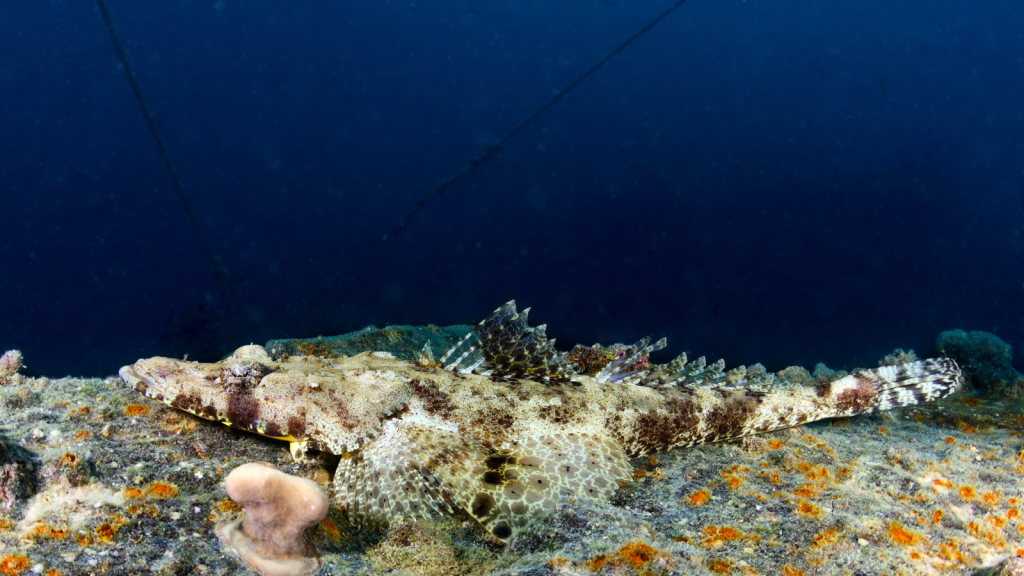
Crocodile fish come in a wide range of sizes. Some species are relatively small, growing to only about 30 centimeters (12 inches) in length. Others, like the giant flathead, can reach an impressive 1.5 meters (5 feet) in length. This size variation allows different species to occupy various niches in their marine habitats.
7. Mouth Like a Trap

The crocodile fish’s mouth is designed for efficient hunting. When they open their mouths, it creates a vacuum effect that sucks in their prey. Their jaws are also equipped with numerous small, sharp teeth that help them grip their catch. Once prey is in their mouth, there’s little chance of escape.
8. Solitary Lifestyle

Unlike many fish species that school together, crocodile fish prefer a solitary existence. They’re typically found alone, hidden among rocks or buried in the sand. They only come together during breeding season. This solitary nature contributes to their mysterious reputation among divers and marine biologists.
9. Slow Swimmers
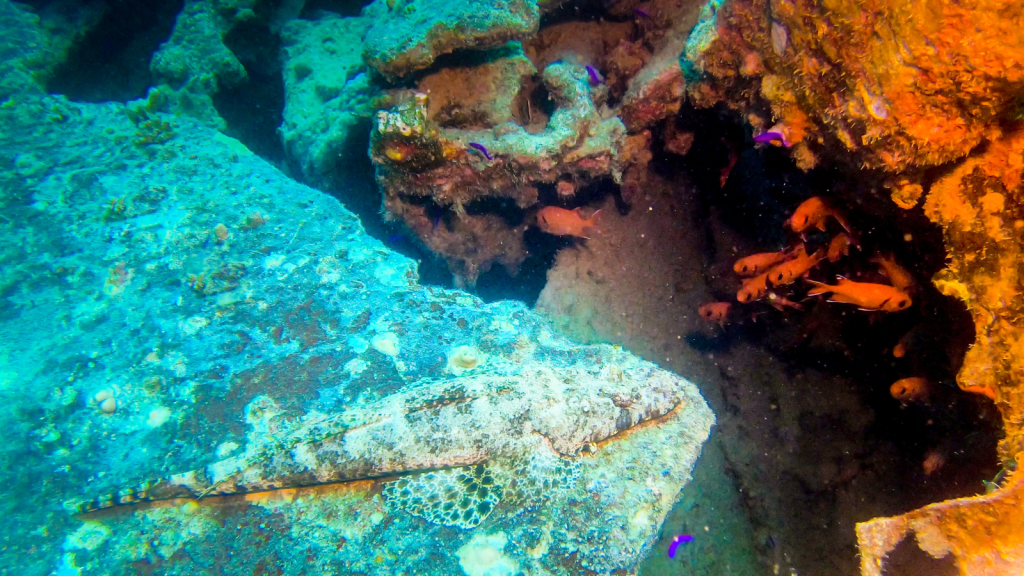
Despite being predators, crocodile fish are not known for their swimming speed. They’re actually quite slow swimmers. However, this doesn’t hinder their hunting success. Their ambush strategy and excellent camouflage more than make up for their lack of speed in open water.
10. Unique Breeding Behavior
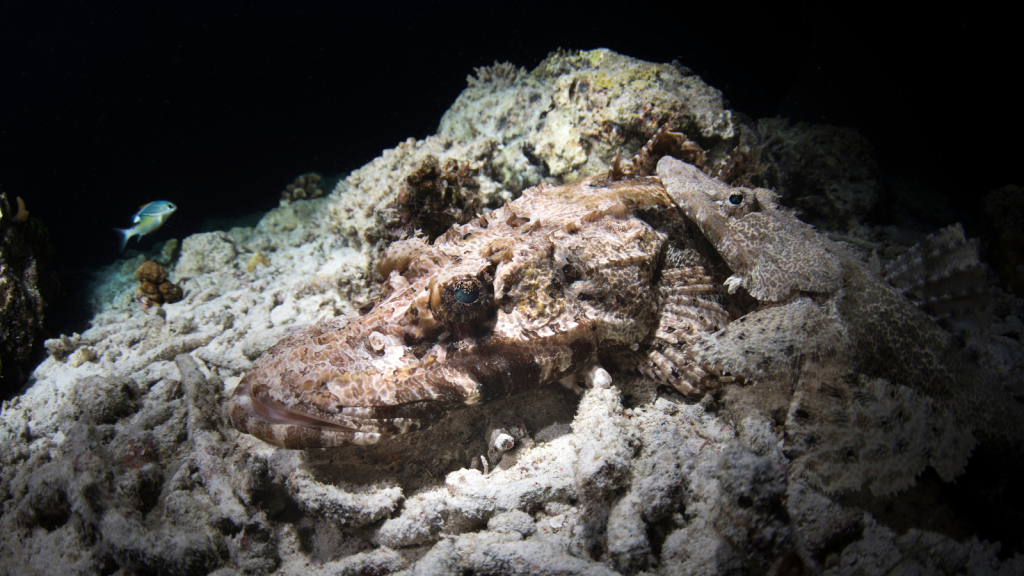
During breeding season, male crocodile fish engage in interesting courtship displays. They may change color or perform specific movements to attract females. After mating, females release thousands of eggs into the water, which are then fertilized externally by the male. The eggs float near the surface until they hatch.
11. Long Lifespan
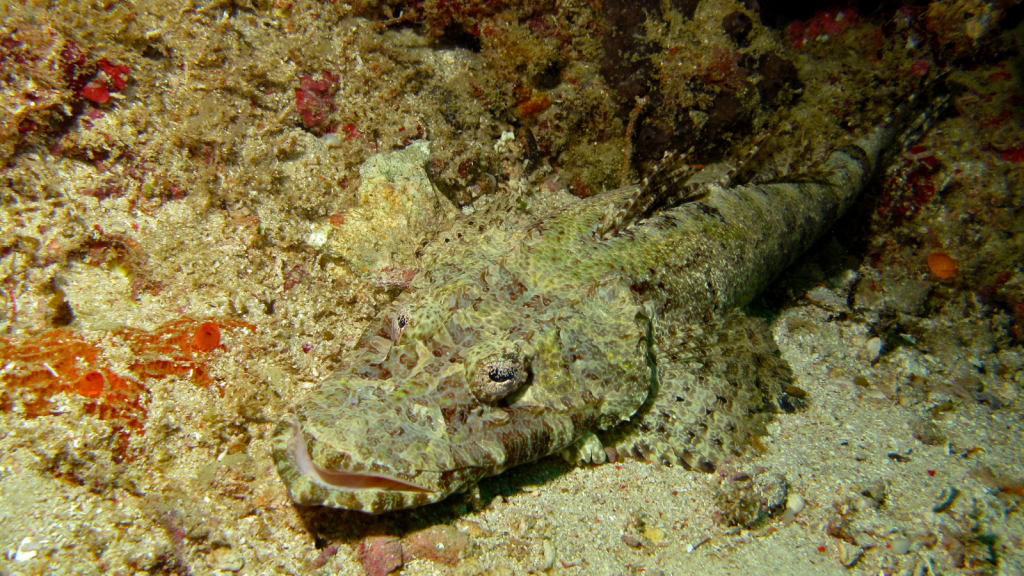
Crocodile fish can live for quite a long time in the right conditions. Some species have been known to live up to 15 years in the wild. This long lifespan allows them to grow to impressive sizes and potentially produce many offspring over their lifetime.
12. Unique Sensory Organs
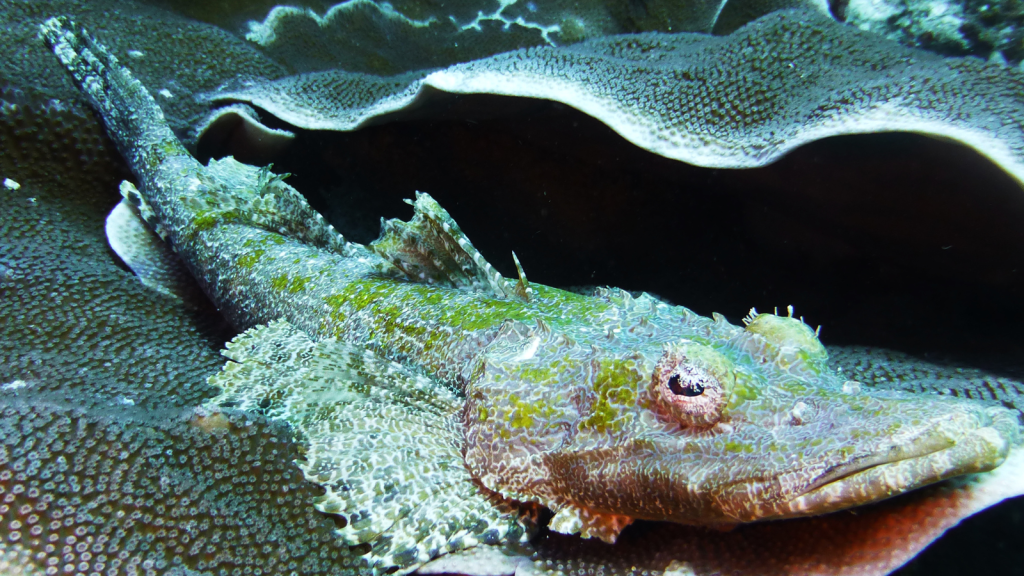
Crocodile fish possess a remarkable sensory adaptation called the mechanosensory lateral line system. This system consists of a series of fluid-filled canals just beneath the skin, running along the length of their body. These canals are lined with tiny hair-like sensors that can detect even the slightest water movements. This allows the crocodile fish to sense approaching prey or predators without relying on sight, giving them a significant advantage in murky or dark waters.
13. Venomous Meat
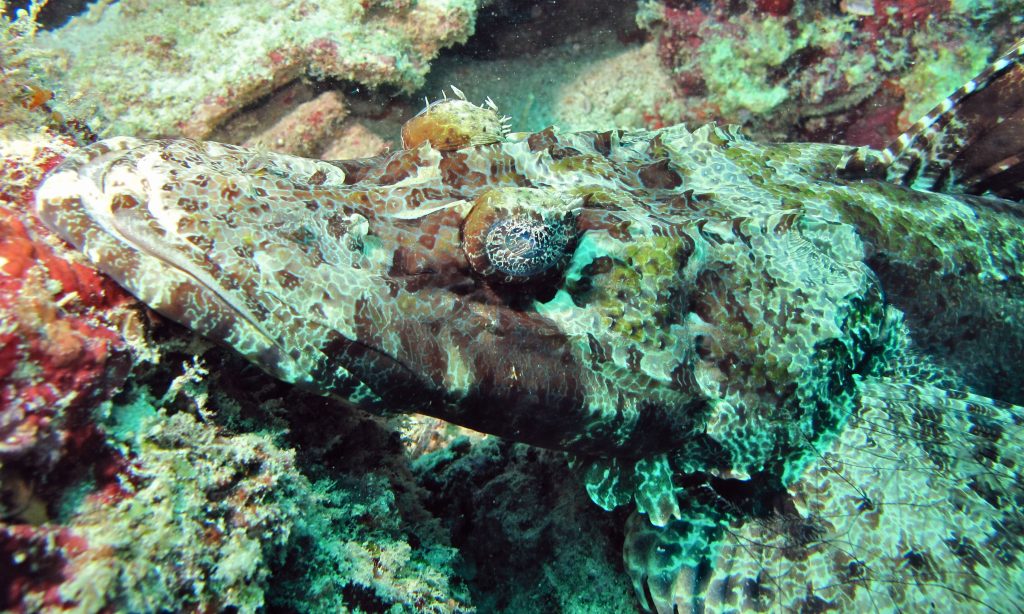
In some parts of Japan, the meat of certain crocodile fish species is considered a delicacy. However, it’s not a dish for the faint-hearted. The flesh itself contains traces of the same venom found in their spines. This means that the meat must be prepared with extreme care to ensure it’s safe for consumption. Chefs trained in handling these fish must remove all traces of venom before cooking.
14. Unusual Breathing Technique

Crocodile fish have developed a unique method to breathe while remaining motionless. They can pump water over their gills by opening and closing their gill covers. This clever adaptation allows them to lie in wait for prey for extended periods without moving a muscle. It’s a perfect complement to their ambush hunting style, enabling them to stay hidden for hours.
15. Rapid Pattern Changes
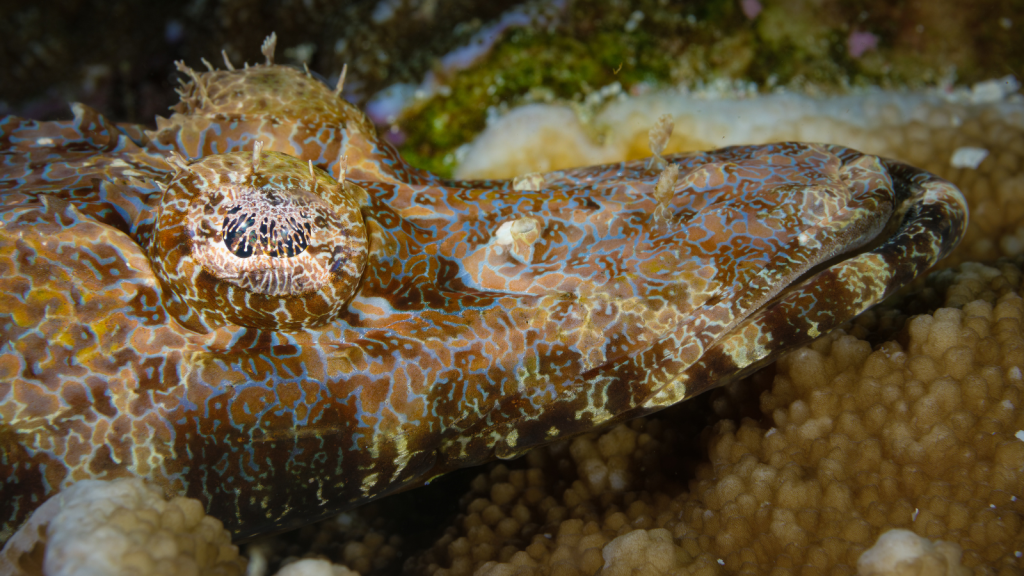
Some species of crocodile fish possess an extraordinary ability to change their skin patterns quickly. This goes beyond simple camouflage. These rapid changes serve as a form of communication with other crocodile fish. They can use these pattern shifts to signal aggression, fear, or even readiness to mate, adding a whole new dimension to their social interactions.
16. Sandpaper Skin
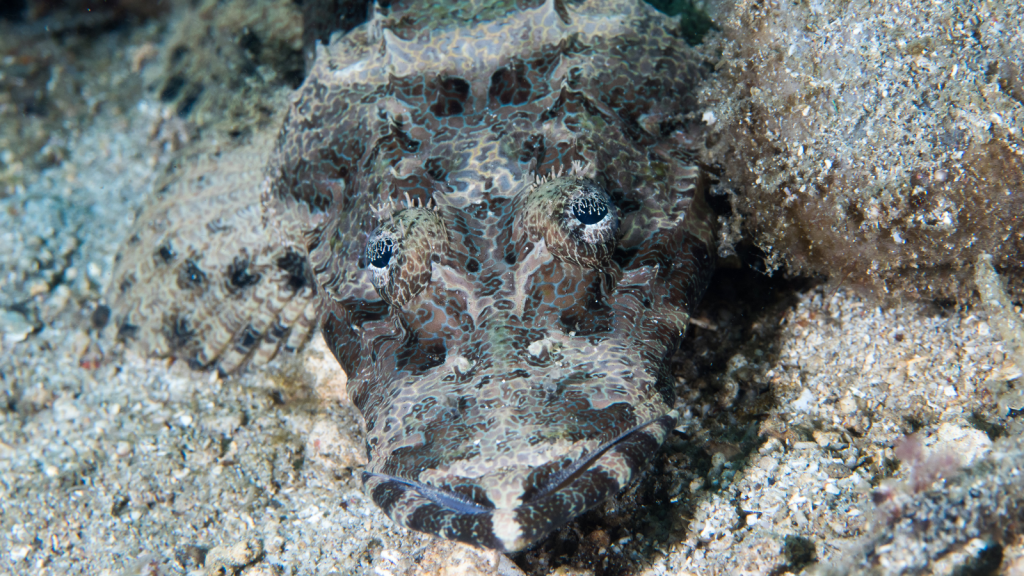
The scales of a crocodile fish are not like those of other fish. They’re ctenoid, meaning they have tiny teeth-like projections on their outer edges. This unique structure gives their skin a rough, sandpaper-like texture. The rough skin serves two purposes: it helps with camouflage by breaking up the fish’s outline, and it reduces water resistance as the fish moves, allowing for more efficient swimming.
17. Specialized Jaw Structure
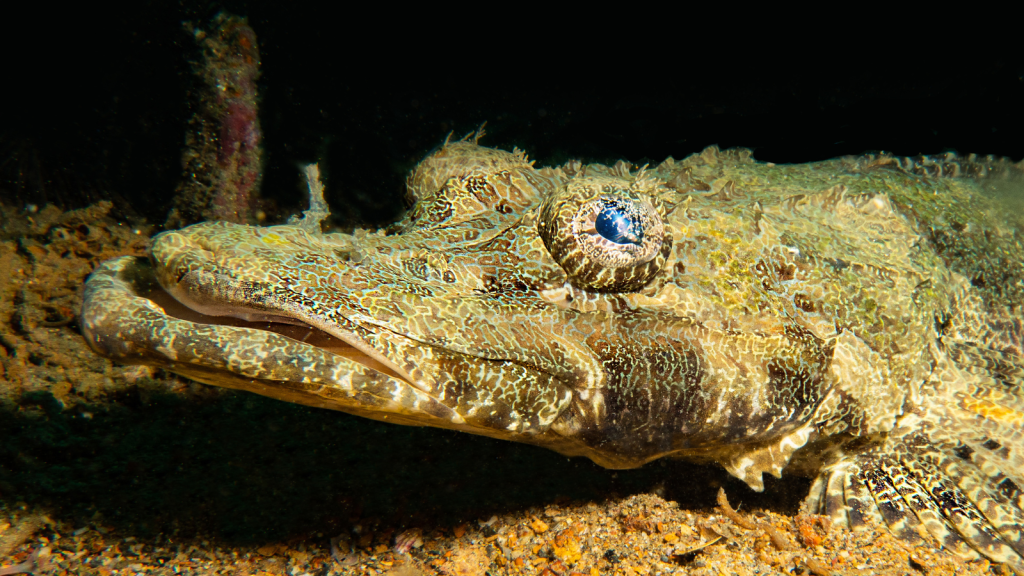
Crocodile fish have a jaw structure that sets them apart from many other fish species. Their lower jaw extends beyond the upper jaw, which is unusual in the fish world. This overbite isn’t a dental problem – it’s a specialized adaptation. The protruding lower jaw allows them to more effectively scoop up prey from the sea floor, enhancing their ability to catch bottom-dwelling creatures.

